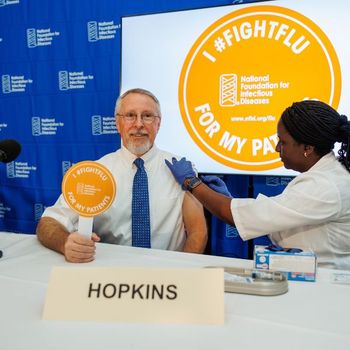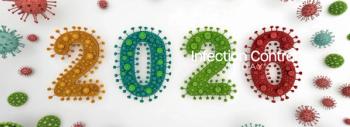
Study Re-Examines Bacterial Vaccine Studies Conducted During 1918 Influenza Pandemic
Secondary infections with bacteria such as Streptococcus pneumoniae, which causes pneumonia, were a major cause of death during the 1918 flu pandemic and may be important in modern pandemics as well, according to a new article in the Journal of Infectious Diseases co-authored by David M. Morens, MD, senior advisor to the director of the National Institute of Allergy and Infectious Diseases, part of the National Institutes of Health.
The researchers examined 13 studies published between 1918 and 1920. During this time, many scientists erroneously believed that influenza was caused by bacteria, not a virus. As a result, researchers began performing and publishing results from clinical trials testing bacterial vaccines designed to prevent the flu. In their new study, Morens and his colleagues used modern statistical and evaluation methods to re-analyze the vaccine effectiveness data from these old studies in an attempt to correct for any statistical biases in the original analysis.
In addition to confirming the importance of bacterial infections associated with the 1918 influenza pandemic, the new analysis suggests that the use of bacterial vaccines containing S. pneumoniae could reduce pneumonia rates and deaths in modern influenza pandemics as well. During the 2009-2010 H1N1 influenza pandemic, the authors write, autopsy results implicated bacterial infections in 29 to 55 percent of deaths. In light of this study, the authors recommend more research into the use of bacterial vaccines to prevent illness and death associated with influenza.
Reference: Y-W Chien et al. Efficacy of bacterial vaccines in preventing pneumonia and death during the 1918 influenza pandemic. Journal of Infectious Diseases. DOI: 10.1086/657144 (2010).
Newsletter
Stay prepared and protected with Infection Control Today's newsletter, delivering essential updates, best practices, and expert insights for infection preventionists.






